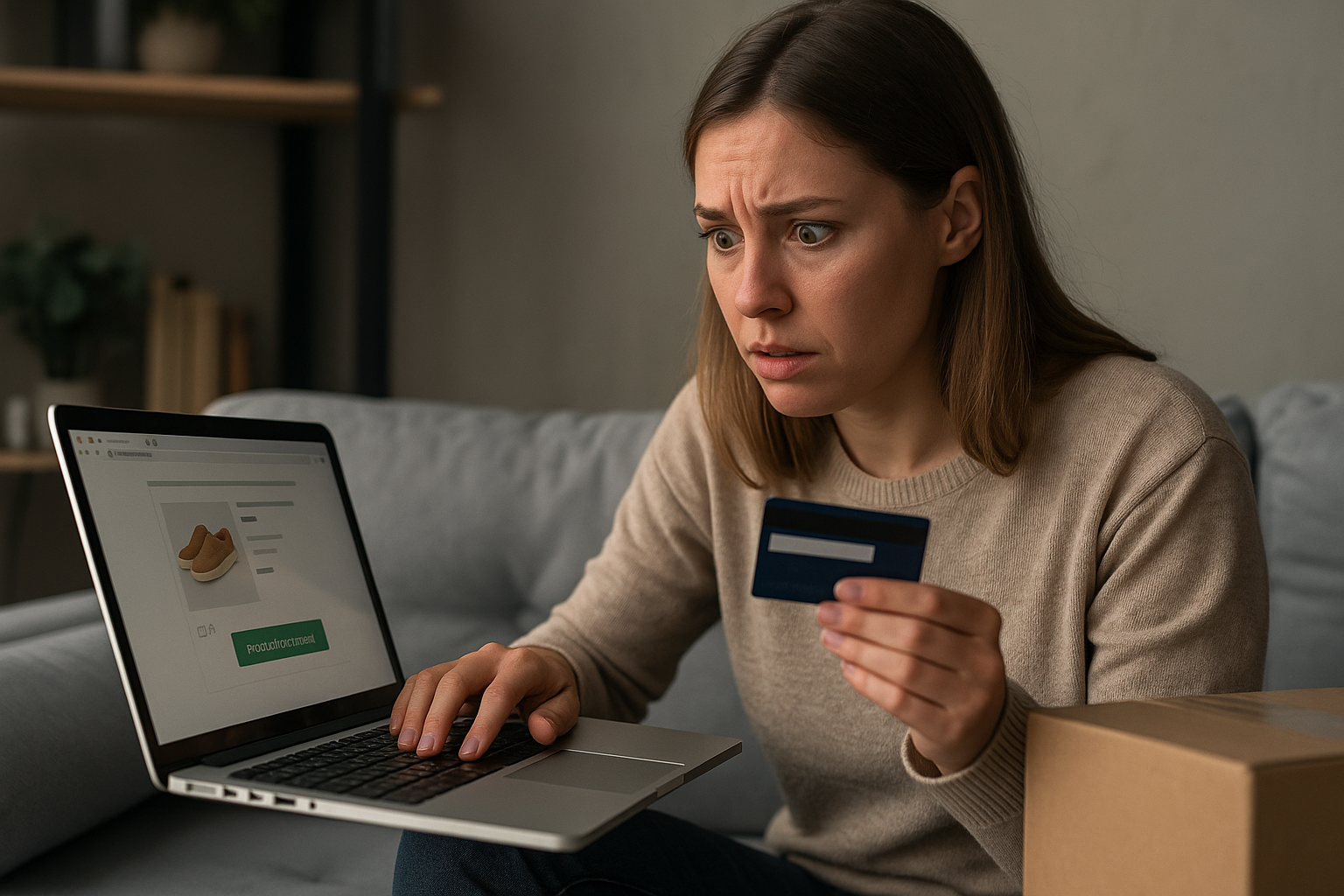
Key takeaways
According to the NAB, Australians lost $9.8 million last year to online shopping scams, and that’s only what was reported.
Fraudsters now build professional-looking fake online shops, often claiming to be trusted Aussie retailers closing down, to lure buyers into paying for products that never arrive or are of poor quality.
If the deal looks too good, the branding looks off, or you can’t find genuine online reviews or an ABN, assume it’s a scam until proven otherwise.
Type website addresses manually, compare prices, look for authentic reviews, and use protected payment methods like PayPal or credit cards.
These small habits dramatically reduce your exposure to online fraud.
We’ve all become comfortable clicking, tapping, and swiping our way through purchases.
From household items to birthday gifts, most of us now jump online without a second thought.
But behind the glossy ads and tempting discounts lurks a growing threat that far too many Australians are still underestimating.
According to the NAB, Australians lost $9.8 million last year to online shopping scams, and that’s only what was reported.
Criminals are becoming more sophisticated, taking advantage of our search for convenience and a bargain.
Whether you’re buying for yourself, managing a business, or helping your clients and team stay informed, this is a trend you can’t afford to ignore.
Let’s discuss what’s really going on… and more importantly, what you can do to protect yourself.

The rise of the ‘Ghost Store’: a scam built for 2025
You’ve probably seen the ads: that local boutique claiming to be “closing after 25 years,” slashing prices on designer clothing or homewares.
But look closer… something often doesn’t add up.
Scammers now run what’s known as ghost stores, convincing-looking websites that pretend to be long-established
Australian retailers.
They often use:
-
Social media ads pushing massive discounts
-
Fake celebrity endorsements
-
Stories about shutting down “after decades in business”
-
Images of smiling ‘owners’ standing proudly outside a shop that doesn’t actually exist
NAB warns these operations are almost always run overseas, selling low-quality products (if anything arrives at all) and refusing refunds.
And because they often accept untraceable payments, your money is gone the moment you send it.
Red flags you should never ignore
Even savvy shoppers can get caught out because these sites are built to look legitimate.
Here are the biggest warning signs to look for according to NAB :
1. Prices that are simply too good to be true
If you’re getting a $300 product for $25, and being told to act now before the sale ends, that’s not a bargain, that’s bait.
2. Random emails, texts, or ads pushing “unbelievable” deals
These messages often link to malicious websites designed to steal your money… or your identity. One click is all it takes.
3. Low-quality branding or suspiciously perfect imagery
Blurry logos can suggest a rushed, copy-and-paste scam.
But ironically, AI-generated images that look too perfect are becoming another telltale sign, especially photos of the supposed store owners.
4. No digital footprint
Search the business name.
If nothing shows up, no reviews, no location, no social presence, that’s a major red flag.
5. Requests for gift cards or cryptocurrency
Legitimate businesses don’t ask you to pay this way.
6. No refund or returns information
Reputable retailers always provide clear policies. Silence is a warning.
What to do before clicking ‘Buy Now’
Just a few simple checks can save you a world of trouble, and potentially thousands of dollars.
1. Pause before clicking links
Go directly to the retailer’s official website by typing it into your browser. Ads and emails are easily faked.
2. Look for genuine reviews
Search the store name plus the word “scam.”
If others have been burnt, there’s usually a trail.
3. Be cautious with overseas stores
If a problem arises, getting your money back becomes far more difficult.
4. Compare prices
If one site is drastically cheaper than everyone else, that’s a red flag, not a bargain.
5. Check for an ABN or ACN
Legitimate Australian businesses display this information proudly and publicly.
6. Use secure payment methods
Credit cards, PayPal, and other protected payment platforms give you recourse if something goes wrong.
7. Think twice before entering your credit card details
If you’re even slightly unsure about a site, don’t hand over your financial information.
Fraudsters only need a single successful transaction to wreak havoc.
Final thoughts
Australia has always been a nation of smart shoppers, but scammers are getting smarter too.
As more commerce moves online, the responsibility is shifting back to the consumer to question, verify, and stay alert.
The good news? A little due diligence goes a long way.
Whether you’re protecting your own money, your family, your clients, or your business, these simple safeguards can help you shop with confidence and avoid joining that $9.8 million statistic.
Stay informed. Stay alert. And remember, if a deal looks too good to be true, it usually is.














